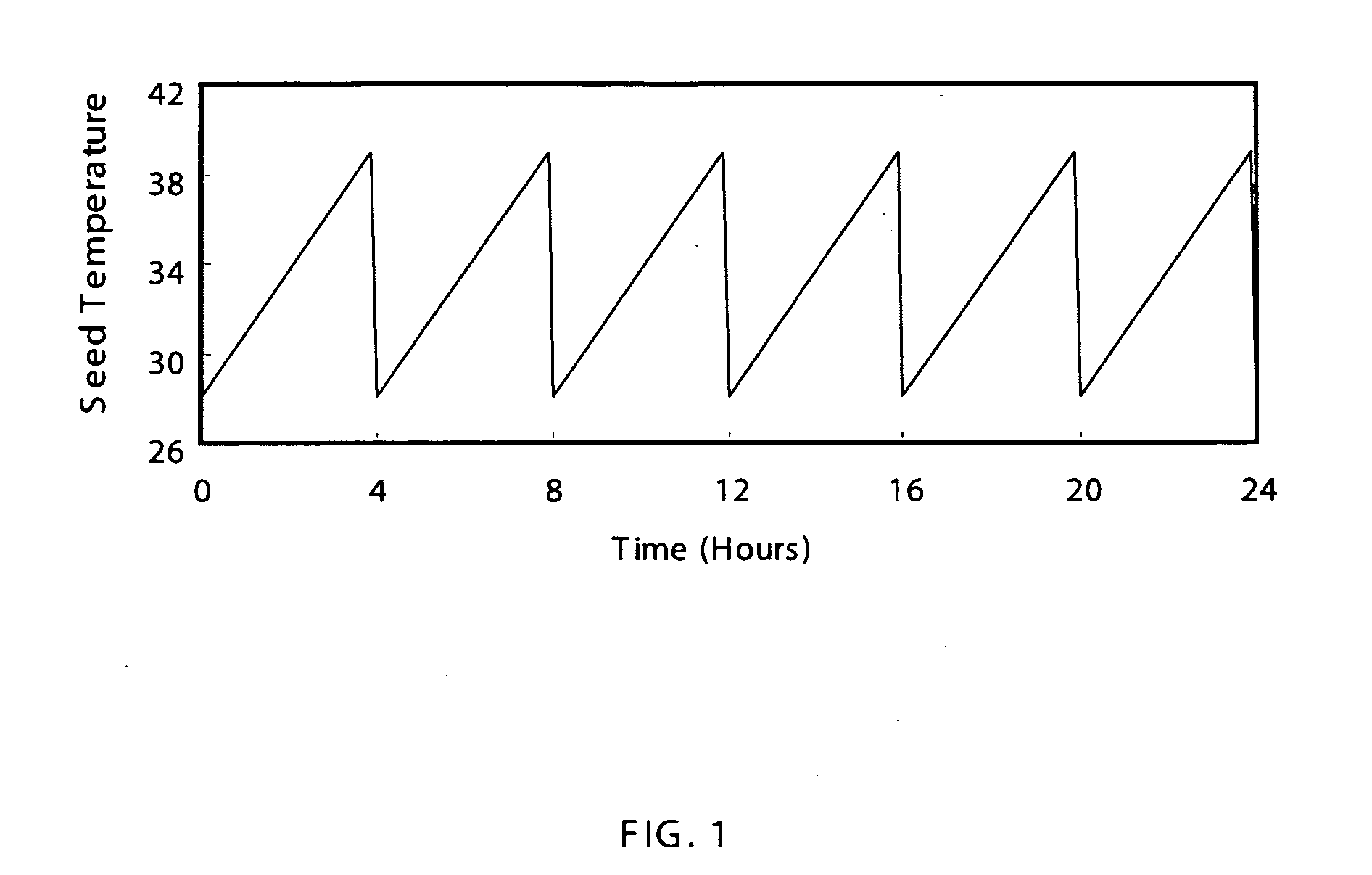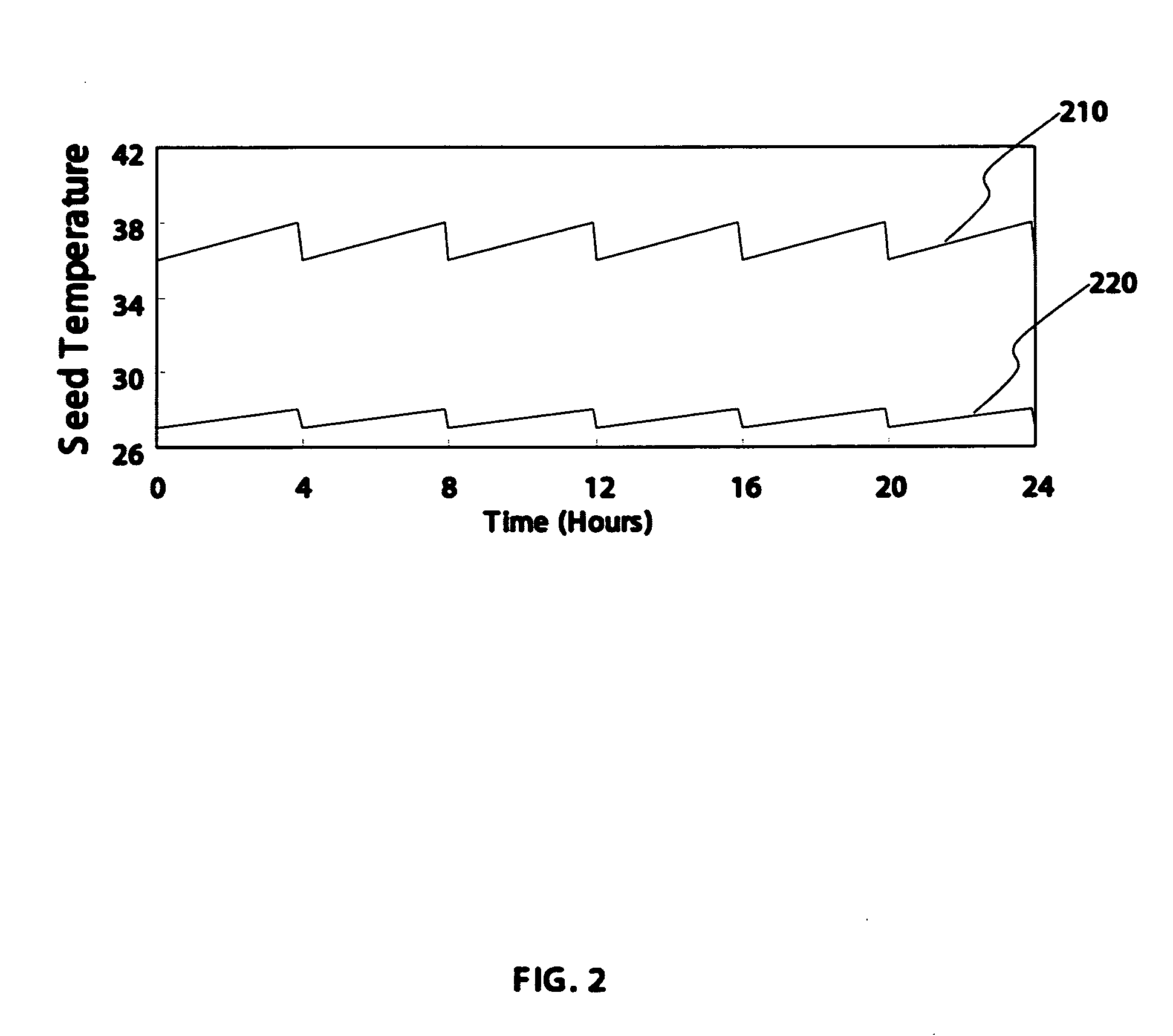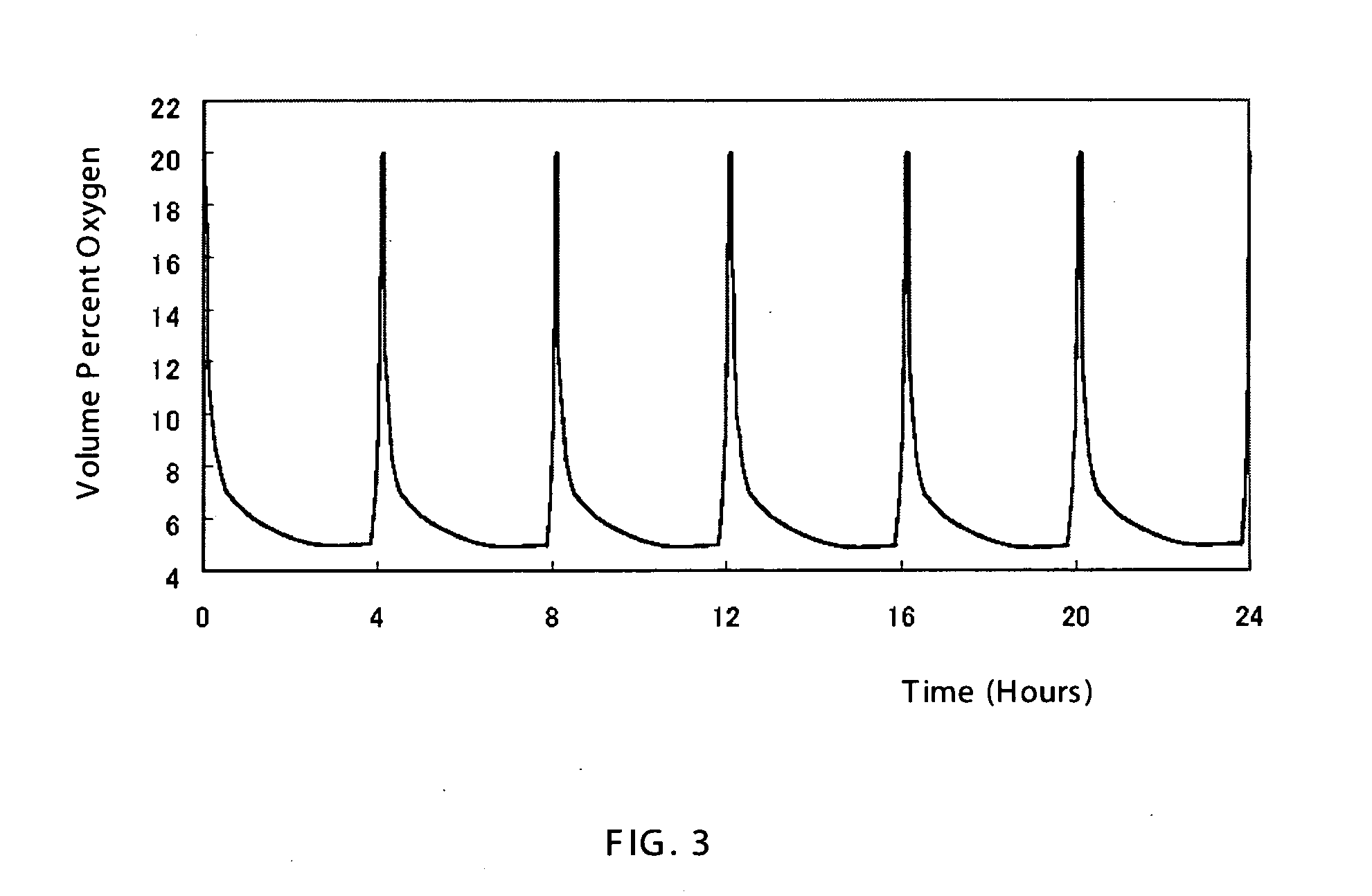Germinated seeds possessing increased water-soluble polyphenols and method of manufacturing
a technology of plant seeds and polyphenols, which is applied in the directions of plant/algae/fungi/lichens, biocide, seed and root treatment, etc., can solve the problems of incompatibility with cosmetic tonics that do not have water-soluble polyphenols, limited application range, and relative difficulty in extracting water-soluble polyphenols from plant materials with water or buffered water solutions, etc., to achieve the effect of hydrating plant seeds and increasing the level of water-soluble polyphenol
- Summary
- Abstract
- Description
- Claims
- Application Information
AI Technical Summary
Benefits of technology
Problems solved by technology
Method used
Image
Examples
embodiment 1
Increasing Water-Soluble Polyphenols in Grape Seeds
[0066]225 g of grape seeds were washed in running water, and were then immersed for 1 hour in an aqueous solution at 50° C. containing 100 ppm of sodium hypochlorite (an anti-bacterial agent). The seeds were removed, and then immersed in another 100 ppm sodium hypochlorite solution at 40° C. for 4 hours. Next, the seeds were washed in distilled water, and then dried with tissue paper. The seeds were then layered at a thickness of approximately 5 cm in a germination inducement container 800 (FIG. 8). The upper surface of the germination inducement container 800 was then sealed. The container was placed in a cultivation room with a room temperature of 28° C., and the seeds were sprayed with a 10 ppm sodium hypochlorite solution at 28° C. every 4 hours. Approximately 100 germinated seeds (4.12 g) were collected at 24 hours (1 day), 48 hours (2 days), 96 hours (4 days), and 168 hours (seven days).
[0067]4.12 g of the germinated seeds tha...
embodiment 2
Water-Soluble Polyphenols from Non-Germinated Grape Seeds
[0069]Approximately 100 grape seeds (4.12 g) from a juice pomace (Riesling type: moisture content of 9.5 to 11) were placed in a mortar, 10 ml of distilled water was added thereto, and the grape seeds were crushed with a pestle. This mixture was centrifuged for 15 minutes at 10000 g, and the supernatant was removed as an extract.
[0070]This extract contained approximately half the amount of water-soluble polyphenols found in the extract of grape seeds of Embodiment 1 that were germinated for 24 hours.
embodiment 3
Effect of Oxygen and Carbon Dioxide Concentrations
[0071]225 g of mung bean seeds, clover seeds, sunflower seeds, and citron seeds were each washed in running water, then immersed in an aqueous solution at 40° C. containing 100 ppm of sodium hypochlorite (an anti-bacterial agent) for 4 hours. Next, the seeds were washed in distilled water, and then dried with tissue paper. The seeds were then layered at a thickness of approximately 5 cm in germination inducement Container 800 (FIG. 8).
[0072]Germination inducement Container 800 was placed in a cultivation room at room temperature (28° C.) while the seeds were sprayed with a 10 ppm sodium hypochlorite solution at 28° C. every 4 hours during a 48 hour period in which germination was induced. Approximately 675 g of germinated seeds were collected.
[0073]4.12 g of the germinated seeds that were collected were placed in a mortar, 10 ml of distilled water was added thereto, and the seeds were crushed with a pestle. The crushed material was c...
PUM
 Login to View More
Login to View More Abstract
Description
Claims
Application Information
 Login to View More
Login to View More - R&D
- Intellectual Property
- Life Sciences
- Materials
- Tech Scout
- Unparalleled Data Quality
- Higher Quality Content
- 60% Fewer Hallucinations
Browse by: Latest US Patents, China's latest patents, Technical Efficacy Thesaurus, Application Domain, Technology Topic, Popular Technical Reports.
© 2025 PatSnap. All rights reserved.Legal|Privacy policy|Modern Slavery Act Transparency Statement|Sitemap|About US| Contact US: help@patsnap.com



